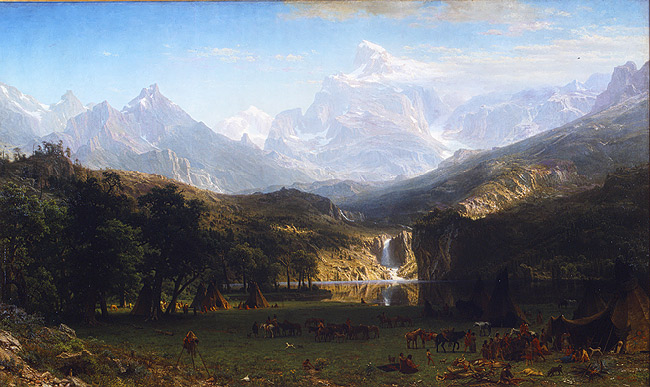Albert Bierstadt, perhaps the most successful of the Hudson River School artists, painted very large canvases with majestic scenes of the American West that were hugely popular in New York and London. James McHenry, an American railway entrepreneur living in London, paid $25,000 for The Rocky Mountains, Lander’s Peak, which was a staggering sum in the nineteenth century.
Why were his paintings so popular? The critics didn’t like them. They didn’t like the over-romanticized compositions, the dramatic light, or the enormous size of his canvases. Yet, these were exactly the elements that Bierstadt’s patrons loved. They bought into the mythology of the American West as a new Eden and the Noble Savage, the Native American who “gave” his homeland to the United States and Manifest Destiny. Believe it or not, the artist had two Native Americans stand next to this painting when he first exhibited it in New York City.
Bierstadt took photographs and made detailed sketches to use when he painted the images of the West after returning to New York from his U.S.-sponsored expeditions. This particular mountain summit is named for Colonel Lander, with whom Bierstadt first traveled to Nebraska and Wyoming to document the territories.
See paintings by the Hudson River School artists at the Blanton Museum of Art’s exhibition, “American Scenery: Different Views in Hudson River School Painting,” which is on view through this Sunday, May 13th.
Recommended Reading

